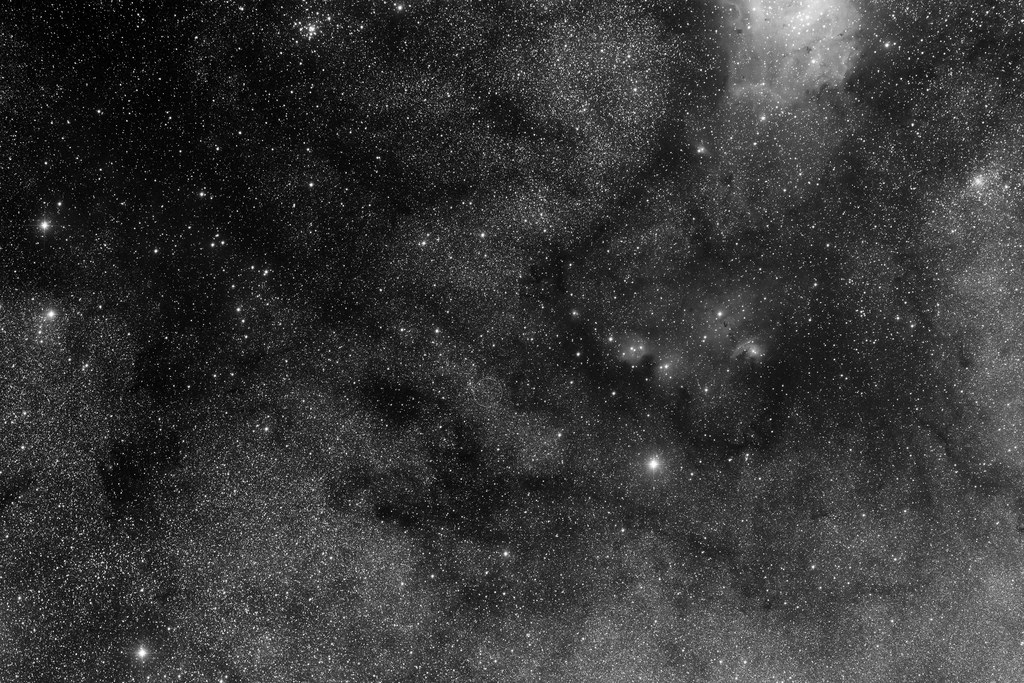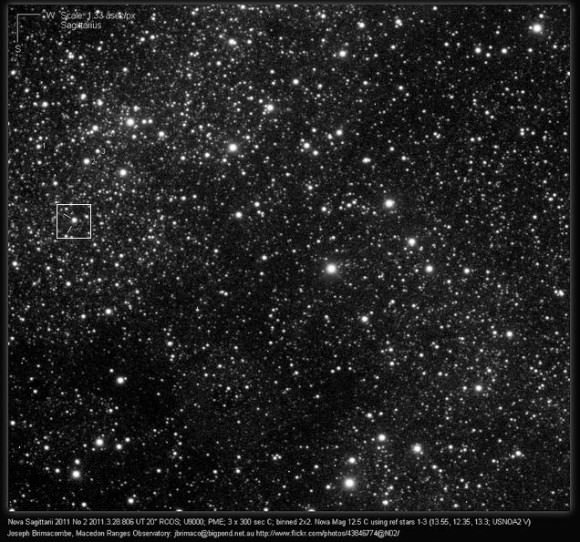If you think you’re looking a a star studded field, you’d be right. But take a close look at the full size image done by Joe Brimacombe and you’ll see a faint circle with the latest of sky phenomena in its center – Nova Sagitarii 2011… #2!
According to the latest AAVSO press release done by Elizabeth Waagen, “We have been informed by the Central Bureau for Astronomical Telegrams (Central Bureau Electronic Telegram 2679, Daniel W. E. Green, ed.) that Koichi Nishiyama, Kurume, Japan, and Fujio Kabashima, Miyaki, Japan, report their discovery of a possible nova at magnitude 11.7 on two unfiltered CCD frames taken around March 27.832 UT. They confirmed the object on images taken on March 27.832 UT. After posting on the Central Bureau’s Transient Objects Confirmation Page (TOCP) webpage, the object was given the provisional name PNV J18102135-2305306.
Low resolution spectra taken March 28.725 UT by A. Arai, M. Nagashima, T. Kajikawa, and C. Naka, Koyama Astronomical Observatory, Kyoto Sangyo University, suggest that N Sgr 2011 No. 2 is a classical nova that is reddened by interstellar matter.”
At magnitude 12.5, one tiny star is hard to pick out of a huge field, especially when it’s so close to our galactic center. As Joe said, “It is quite close to the Cat’s Paw and Lagoon Nebulae, so the wide field image is neat even though its only a single 10 minute exposure.” For those of us who would take more than ten minutes just to find it, the celestial coordinates are: R.A. 18:10:21.35 Dec. -23:05:30.6. N Sgr 2011 No. 2 has been entered into VSX and assigned the identifier VSX J181021.3-230530. Finder charts for N Sgr 2011 No. 2 may be plotted by entering the coordinates above in the International Variable Star
Plotter. Please report observations to the AAVSO International Database
as N SGR 2011 NO. 2.
It might be an early morning adventure, but then… Aren’t the skies always the darkest just before dawn?
Many thanks to Joe Brimacombe and AAVSO for waking us up!



I never would have expected that somebody could work a Dark Knight reference into an astronomy news article. Well done!
I’m glad the AAVSO and the various projects that occur under it are reported on this site. Anybody who hasn’t enjoyed hunting down and reporting variable stars and other stellar wonders should check the organisaton out. If you’re looking for something meaningful and enjoyable to add to your observing nights, the AAVSO is the place to go.